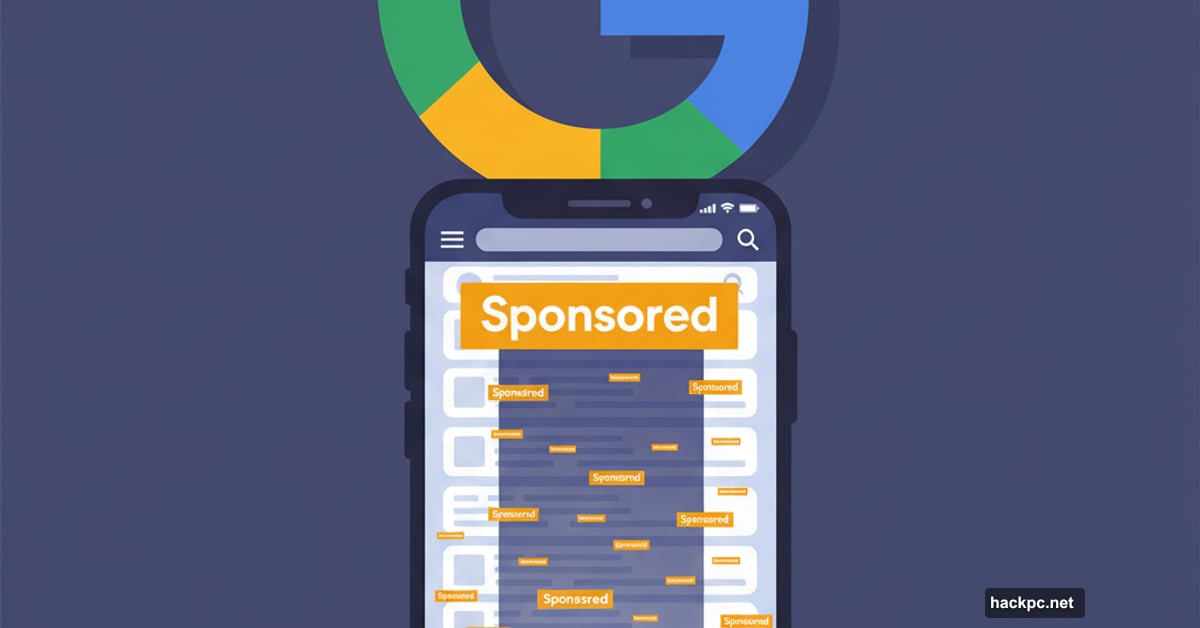
Google rolled out sweeping changes to Search and Discover this week. The company framed these updates as user-friendly improvements. But one change stands out as particularly clever marketing spin.
You can now collapse ads on Google Search results. Sounds great, right? Finally, a way to hide those sponsored links cluttering the top of every search. Except Google found a way to make collapsed ads even more visible than before.
Let’s break down what’s actually changing and why it matters for how you browse the web.
The Collapsible Ad Trick
Google added a new “Hide sponsored results” button to Search. Tap it and ads disappear from view. Simple enough.
But here’s the catch. When you collapse those ads, the “Sponsored Results” label stays put. In fact, it follows you down the page as you scroll through organic results.
So ads you thought you dismissed still occupy prime real estate on your screen. Plus, that persistent label serves as a constant reminder that sponsored content exists above and below where you’re reading.
The label can appear above AI Overviews, below them, and at the bottom of search results. Google grouped all text ads under these headers. Yet you’ll never see more than four text ads in any single cluster, the company promises.
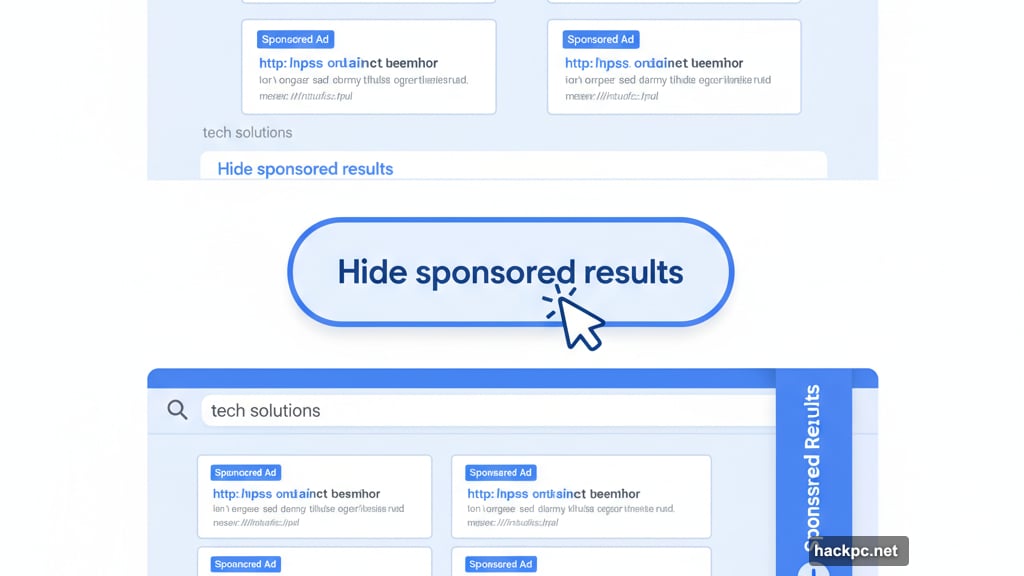
That’s technically fewer visible ads than before. But the “Sponsored” label creates a more prominent ad presence throughout your entire browsing session. Collapsing ads doesn’t remove them. It just changes how they follow you around.
AI Overviews Get More Ad Real Estate
Those AI-written summaries at the top of search results? They’re called AI Overviews. Google uses them to answer questions quickly without requiring clicks to external sites.
Now sponsored content can sandwich these AI summaries. Ads appear above them, below them, and further down the page. So even when you collapse the top ads, you’ll encounter sponsored labels throughout your search experience.
This matters because AI Overviews already reduced traffic to publishers and websites. Adding more ad placements around these summaries increases the chance you’ll click sponsored content instead of organic results. That benefits Google’s revenue but potentially hurts the quality of information you find.
The “Sponsored” label will show up across Google properties too. Shopping ads will display “Sponsored Products” branding. Desktop and mobile users will see these changes roll out everywhere Google serves ads.
Sports Fans Get a News Feed
Google added a “What’s New” button for sports searches. Looking up players or teams? Tap that button to see trending updates and news articles.
This feature launches in the US over the next few weeks. It’s designed to help fans catch up quickly on the latest developments. For casual fans who don’t follow every game, it could prove genuinely useful.
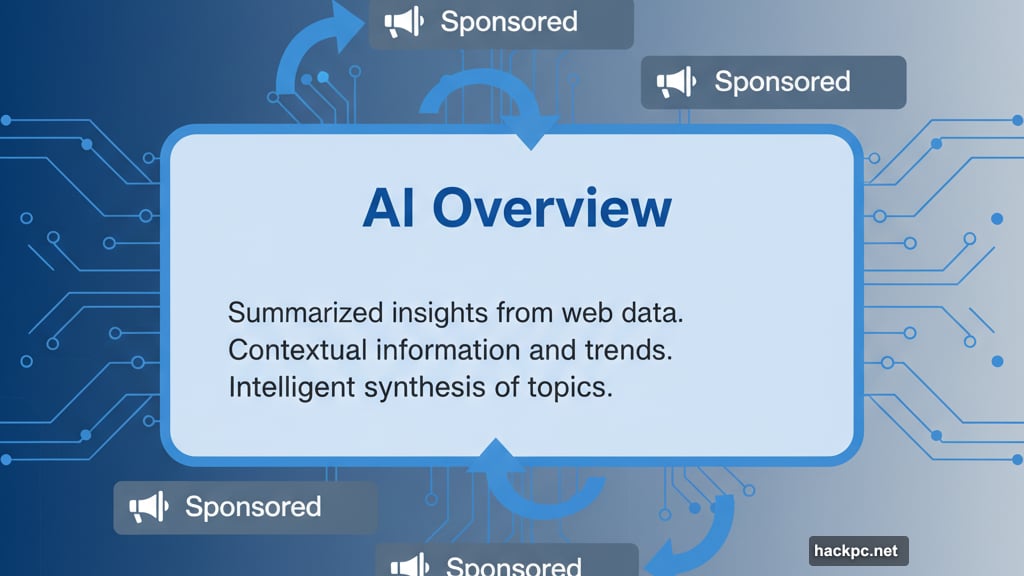
However, it also keeps users inside Google’s ecosystem longer. Instead of clicking through to ESPN or The Athletic for comprehensive coverage, you’ll scroll through Google’s curated feed. That’s less traffic for sports publishers who already struggle with Google’s dominance.
The company frames this as helping users stay informed. But it’s also helping Google keep you on their platform where they control the ad inventory.
Discover Feed Gets AI-Powered Previews
The Google app’s Discover feed on mobile now includes AI-generated topic previews. These short summaries expand to show more information and related links when you tap them.
Google says this helps users stay current on topics they care about from various publishers. The feature launched in the US, South Korea, and India already.
But this creates another layer between users and publisher websites. Instead of visiting a news site directly, you’ll read AI-generated summaries in the Google app. Those summaries pull information from multiple sources but deliver it through Google’s interface.
Publishers see their content used to train and populate these AI features. Yet they receive declining traffic and revenue as Google answers questions without sending users to their sites. The “helping you stay informed from various publishers” line rings hollow when those same publishers report massive traffic declines.
The Pattern Becomes Clear
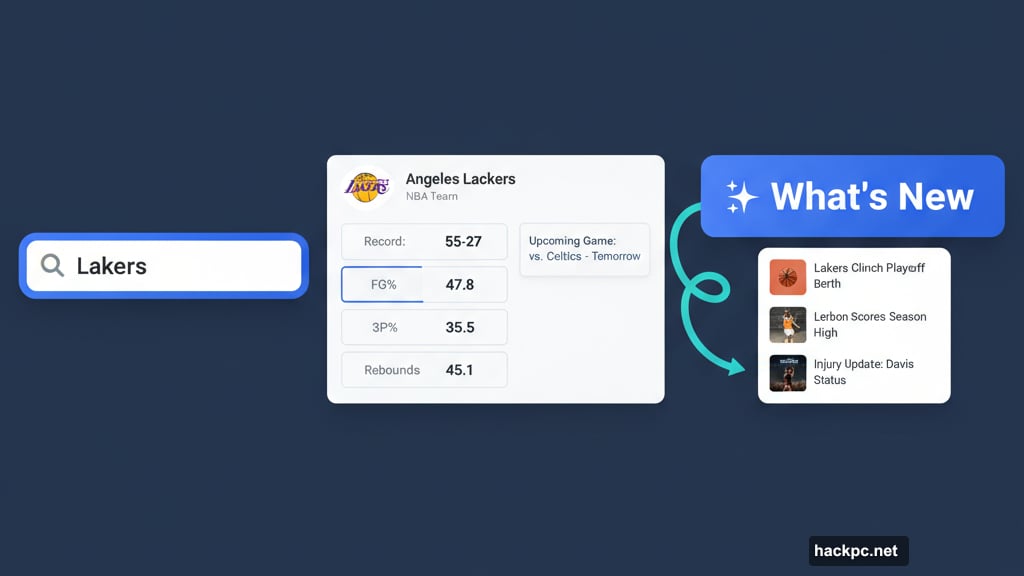
These changes share a common thread. Google positions each update as improving user experience. Collapsible ads give you control. Sports feeds help you catch up. Discover previews keep you informed.
Look closer and different priorities emerge. Collapsible ads don’t reduce ad presence. They make it more persistent. Sports feeds and AI previews keep users inside Google’s walled garden. Publishers lose traffic while Google maintains control of the user relationship and all the ads that come with it.
That’s not necessarily evil. Google built a search engine that billions use daily. They deserve to monetize it. But calling these changes user-friendly improvements stretches credibility when the underlying motivation is so clearly about revenue and retention.
The company could have made ads less intrusive. They could have sent more traffic to publishers. Instead, they found clever ways to make ads more prominent while appearing to hide them, and to keep users on Google properties longer while claiming to surface diverse sources.
What This Means for Your Searches
Expect search results to feel more cluttered despite the collapsible ads. That “Sponsored” label will follow you down the page like a persistent salesperson.
You’ll also spend more time inside Google’s ecosystem. Sports updates, trending topics, and AI summaries all live within Google apps and pages. Clicking through to actual websites requires extra steps.
For publishers and content creators, the outlook grows darker. Google continues finding ways to answer user questions without sending traffic to the sites that created the information. AI Overviews already hurt referral traffic. These new features compound that problem.
The updates roll out across desktop and mobile over the coming weeks. So if you notice search results looking different or ads behaving strangely, this is why. Google updated the experience. Just don’t mistake these changes for user-focused improvements. They’re revenue-focused optimizations dressed up as helpful features.
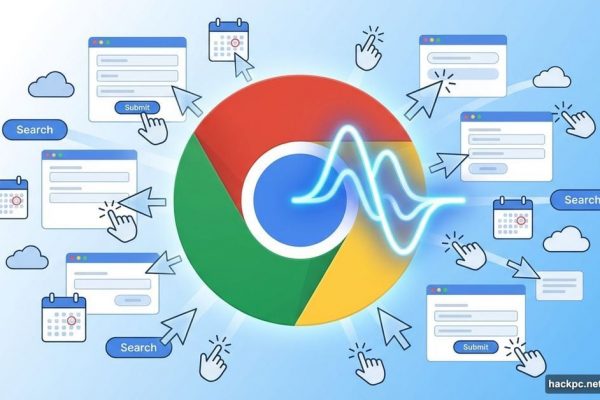
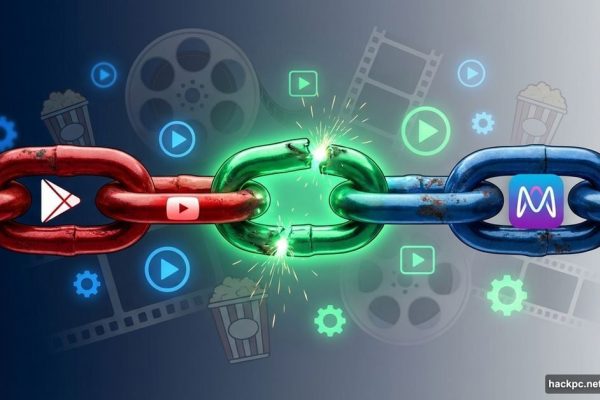

Comments (0)